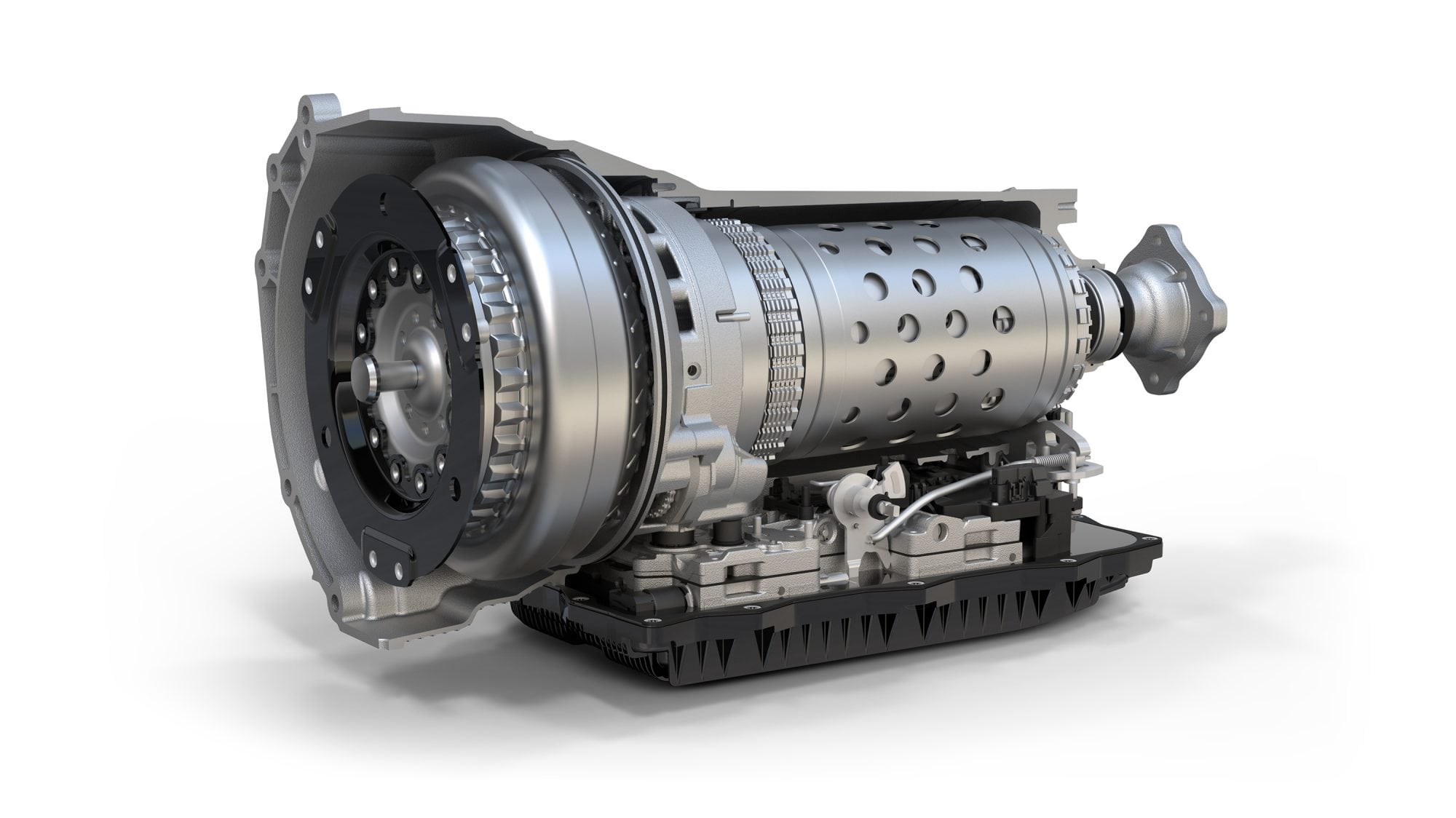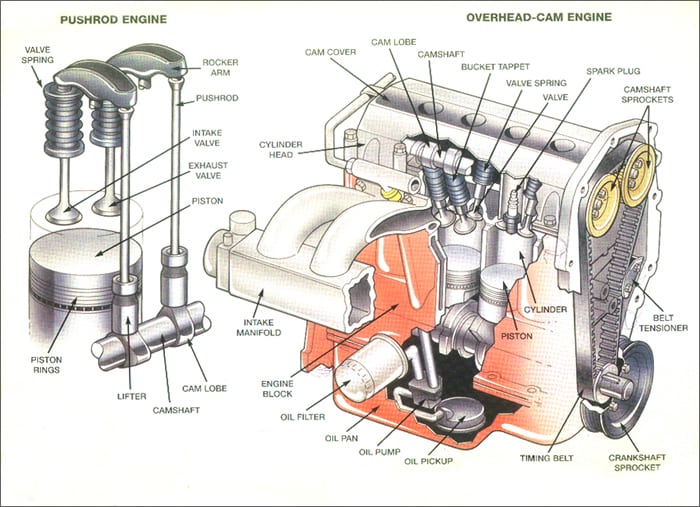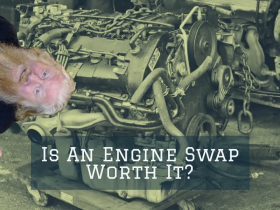It’s not unusual to read a review, see a spec list, or otherwise see technical terms for an engine that are not accompanied by an explanation. For example, a car might be listed as having a DOHC, 32-valve V8. What, exactly, is that?
To help clarify things, let’s look at the three most common engine camshaft types so you’ll know what they are. The camshaft is the most integral part of an engine’s timing. On most engines, the crankshaft at the bottom rotates, turning a belt or chain that itself turns the camshafts, which control fuel and air flow into the cylinders, timed to meet spark for ignition. That ignition pushes pistons which create the stroke that turns the crankshaft. You can learn about basic engine operations by going here.
OHV / Pushrod
Overhead valve, also commonly called pushrod, engines are a simplified V-style design. These are built to be compact and resistant to oil contamination and are often used in small displacement racing. In consumer automotive, however, the pushrod engine has largely been replaced by the SOHC and DOHC designs.
Simply put, viewing the engine from the front, the valves and heads make a V shape, as with any V6, V8, etc. At the center (bottom) of that V’s valley is a single camshaft that rotates from a belt or gear driven off the crankshaft at the bottom of the engine block. That camshaft has lobes which press against rods that go upwards on either side, up the V to the top, where they push and release rocker arms. Those rods (pushrods) are where this engine gets its nickname. The rocker arms, of course, press down against a spring and valve(s) to open and close them, allowing air, fuel, and exhaust to enter and exit the cylinders.
Although robust and compact, pushrod-style engines tend to be loud and are not as efficient as other options with more valve capability can be.
SOHC
The single overhead camshaft engine design is very common in today’s V-category. SOHC is also often used on inline engine designs. As the name implies, a single camshaft sits over the top of the head(s) on the engine. The timing belt, chain, or gears from the crankshaft turn this camshaft and its lobes press and release rocker arms to open and close valves.
This engine style is relatively robust, simple to produce, and can accommodate three or four valves per cylinder to increase efficiency through better inlet and exhaust control.
DOHC
Dual overhead camshaft style engines are becoming more and more common in today’s fuel economy-focused world. These work similarly to an SOHC engine, but have two camshafts on each head rather than one (hence the Dual name).
Usually, one camshaft will operate the intake (fuel, air) valves while the other will operate exhaust valves. This gives more precise timing control and allows for more valves per cylinder than does SOHC.









